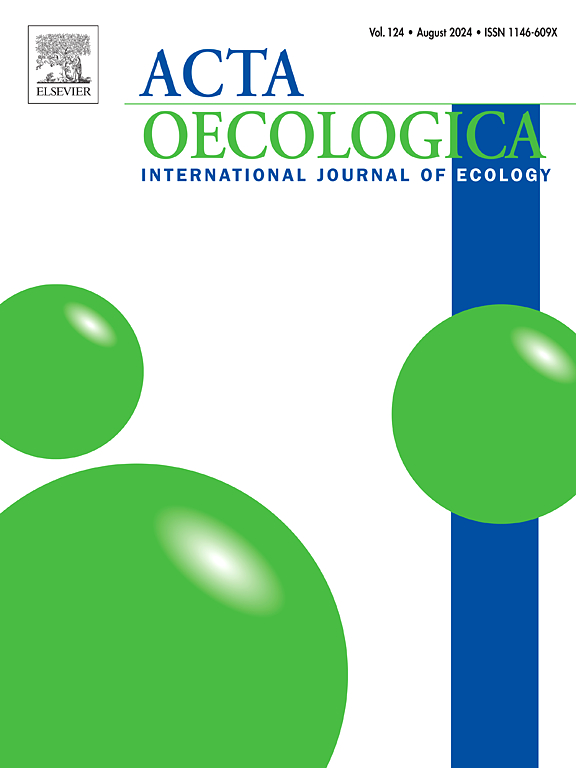Spatial variation in population abundance of invasive Rattus rattus across coastal habitats of East African island archipelago
IF 1.3
4区 环境科学与生态学
Q3 ECOLOGY
Acta Oecologica-International Journal of Ecology
Pub Date : 2025-05-28
DOI:10.1016/j.actao.2025.104086
引用次数: 0
Abstract
It is well established that animal species exhibit variation in population across different habitats. Environmental and anthropogenic factors may contribute a lot to this. However, to what extent these factors affect species populations remains largely unexplained in most rodent species. We assessed the influence of environmental and anthropogenic factors on the variation in population abundance of Rattus rattus in the East African island archipelago. Sherman® live traps were used to capture R. rattus in various habitats categorised as mosaic landscape, coastal forest and shrub mosaic. High abundancies of R. rattus were recorded in mosaic landscapes and comparatively lower abundancies in coastal forests and shrub mosaics. Areas with higher abundancies of R. rattus were close to farmlands and human settlements characterized by low EVI and NDVI implying that areas with low EVI and NDVI associated with anthropogenic activities support high population abundance of R. rattus. Since R. rattus is a pest reported to cause significant food losses and a potential reservoir host of many zoonotic diseases, we advocate the implementation of management and control measures to control its population. Control measures should focus on managing species' populations through environmentally friendly approaches to avoid damage to other biodiversity. This goes in line with updating and formulating effective Integrative Pest Management plans and control measures for vertebrate pests in human habitats.

东非岛屿群岛沿海生境入侵鼠种群丰度的空间变异
众所周知,动物物种在不同的栖息地表现出种群差异。环境和人为因素可能在很大程度上造成了这一现象。然而,这些因素对大多数啮齿动物种群的影响程度在很大程度上仍未得到解释。研究了环境因子和人为因子对东非岛屿群岛Rattus Rattus种群丰度变化的影响。Sherman®活捕器用于捕获不同生境的大鼠,这些生境分为马赛克景观、沿海森林和灌木马赛克。在马赛克景观中记录到高丰度的褐家鼠,而在沿海森林和灌木马赛克景观中记录到相对较低的丰度。褐家鼠高丰度区域靠近农田和人类住区,具有低EVI和NDVI特征,表明与人类活动相关的低EVI和NDVI区域支持褐家鼠高种群丰度。由于大鼠是一种造成严重粮食损失的害虫,也是许多人畜共患疾病的潜在宿主,我们提倡实施管理和控制措施来控制其数量。控制措施应侧重于通过环境友好的方法管理物种种群,以避免损害其他生物多样性。这与更新和制定有效的综合有害生物管理计划和控制人类栖息地脊椎动物有害生物的措施是一致的。
本文章由计算机程序翻译,如有差异,请以英文原文为准。
求助全文
约1分钟内获得全文
求助全文
来源期刊
CiteScore
3.60
自引率
0.00%
发文量
57
审稿时长
>0 weeks
期刊介绍:
Acta Oecologica is venue for the publication of original research articles in ecology. We encourage studies in all areas of ecology, including ecosystem ecology, community ecology, population ecology, conservation ecology and evolutionary ecology. There is no bias with respect to taxon, biome or geographic area. Both theoretical and empirical papers are welcome, but combinations are particularly sought. Priority is given to papers based on explicitly stated hypotheses. Acta Oecologica also accepts review papers.

 求助内容:
求助内容: 应助结果提醒方式:
应助结果提醒方式:


